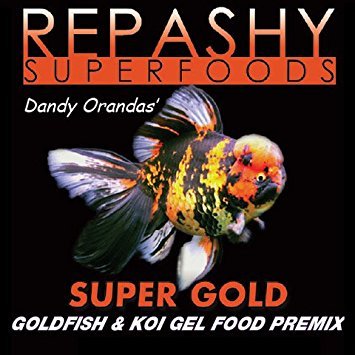| Back to Back Issues Page |
 |
|
The Goldfish Gazette, Issue #051 -- Feeding Goldfish March 30, 2018 |
Goldfish Care Tips and GuidelinesA Free Monthly Resource For Goldfish Enthusiasts In This Issue
After water quality, how and what you feed your Goldfish is the next most important part of Goldfish care. Feeding Goldfish I was amused recently when I read the feeding instructions on a Goldfish food container. It read "Feed no more than can be eaten in two minutes". The reason this instruction was on the packet was because the manufacturer knows that if any more than that is fed, it would dissolve before it could be eaten and quickly pollute the water. But is this enough food for growing active Goldfish? How Goldfish FeedWe know Goldfish are browsers because they only have a rudimentary stomach. They can't gulp down a large meal and digest it over several days.If Goldfish are presented with a lot of food, they will stuff as much as they can into their mouths, chew it, and swallow it before looking for the next mouthful. Goldfish will continue to do this until they get to the point where they can't cram any more food into their digestive tract, and they look like they will explode. They will then stop eating for a short period. This process can take up to an hour or more. I am constantly amazed at how much food young Goldfish can process. I feed two to three times the amount of daphnia and mosquito wrigglers they can eat, and yet over the next few hours they will eat them all. The point I am trying to make is this; if feeding dry prepared food, the amount Goldfish can eat in two minutes is about two mouthfuls. This amount of food isn't enough for growth or winter conditioning. It probably barely sustains them. Food OptionsThere are many products available on the market for feeding Goldfish, but which options are best?We know that the natural food of Goldfish is small aquatic life in the form of worms, insect larvae and crustaceans such as daphnia. Water plants form a large part of their diet and we also know that different foods affect water quality differently. The decision is even more important for enthusiasts keeping fancy varieties as we know digestive problems affect them the most. Here are the most popular food options:
In Summary To feed your Goldfish sufficient food that does more than just sustain them, and doesn't cause digestive problems, you need a food that most closely resembles their natural diet. One of the most popular pages on the About Goldfish website with over 1,500 queries a month is the swim bladder disorders page. This tells me that it is a big problem for the Goldfish keeping community. Since changing to Repashy gel foods, I haven't had one single swim bladder issue, which is why I recommend them so highly. To read more about feeding Goldfish, click here…
Comments? Ideas? Feedback? I'd love to hear from you. Just reply to this e-zine and tell me what you think, or what topics you want covered. Next Month's Topic Unexplained illnesseswww.facebook.com/aboutgoldfish |
| Back to Back Issues Page |